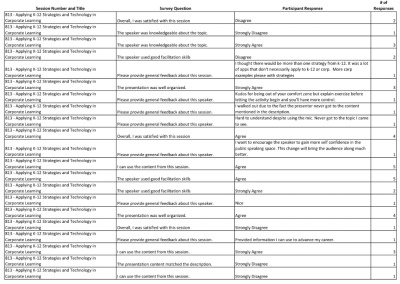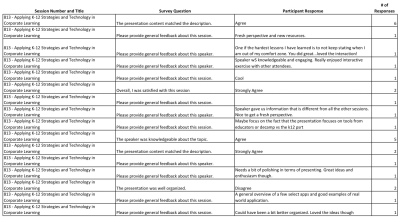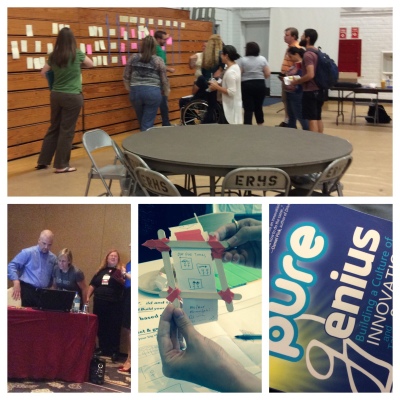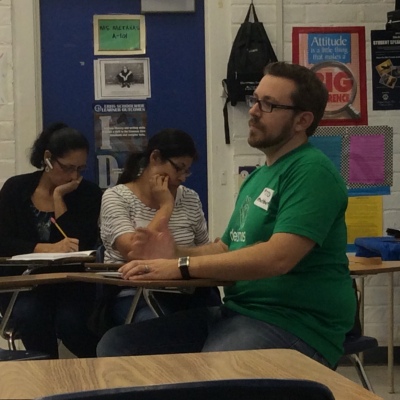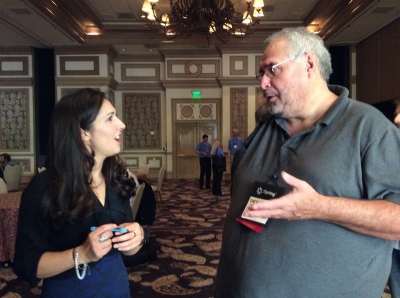Prologue
I got back home Halloween night. I'd spent the back half of last week attending the eLearning Guild's DevLearn Conference 2014 in Las Vegas, Nevada. I had a few minutes to unload and unwind before Mrs got home from work. So I started in on The Empathy Era by Belinda Parmer, CEO of Lady Geek, a creative agency in the UK.
I'd barely opend it when an infographic caught my eye: There is a direct link between emotional intelligence and salaries (Bradberry and Greaves, 2009). Thinking about this made me want to know more, so I googled
emotional intelligence. Which led me to a recent article in The Atlantic about its
dark side. Which, after I'd read the article, was a good thing. There are shades of gray in everything. This is why teaching critical thinking is vital.
This train of thought made me wonder where learning critical thinking should happen: at school, at home, or on the job? For me the answer was everywhere, because as I'd learned at DevLearn context is crucial. In school the responsibility for teaching critical thinking to students falls squarely on teachers' shoulders; or does it? Students have a responsibility to own their learning, too. Teaching it to workers on the job falls on, well, the people who design learning experiences: instructional designers like me who work in L&D (Learning and Development). As in K-12, learners have to own their development, too.
K-12 and L&D
I thought, when I began a #madwriting session early this afternoon that this Connect the Dots blog post would be simple. Only it's not. It's nuanced, in this case, because I think instructional designers are educators in the way that teachers are educators.
As I read Malamed's post and the 10 ideal qualities instructional designers should possess the thought, more than once, crossed my mind that the list reminded me of the teachers I met at every EdCamp I've ever been to.
I was a little let-down then when I googled 10 qualities for an ideal teacher. It's not that I didn't find many qualities that both designers and teachers shared. The instructional design qualities seemed to reflect mostly technical intelligence. Teacher qualities appeared to be grounded in emotional intelligence.
One of the teacher better lists came from the Queensland, Australia Department of Education. Being the sort of person I am, a recent convert to the Teach (Design) Like A Pirate discipline, the quality that leapt off the screen to land in my lap was enthusiasm. This felt like the passion I've come to understand makes me want to be better at my job.
Then I went off on a tangent and googled a third time: qualities of an ideal student. I was surprised to find this EdTech Review article from last year about 21st century classrooms. It screams instructional design.
Where does this rhizomatic excursion leave me? Are instructional designers educators like teachers? It depends. If the designer is passionate about what they do and pushes their holistic selves to create an environment where learners can take on more of the responsibility for their education then yes, they are educators. The emotional intelligence, empathy for learners, is what really matters. It's the teachers' context.
Epilogue
Here and there as I wrote this I kept going back to The Empathy Era. It was a good thing, too. Because at the end of Chapter One, at the end of the last paragraph was a sentence that made me shiver with excitement. It was about putting yourself in another's shoes, seeing the world through their eyes, and providing them with something that they didn't know they needed.
I had the good fortune to have been selected to present Applying K-12 Strategies and Technology in Corporate Learnng at DevLearn. What I learned there validated my decision to participate in EdCamp professional development. We share a passion for learning.
And you know what? It's a small world after all. At DevLearn I met Belinda Parmar, author of The Empathy Era. Whilst waiting to meet her I got to speak with Kristen, another DevLearn attendee. She said that a previous DevLearn event had changed her life. I know the feeling. This one changed mine.
References
Bradberry, T. and Greaves, J. (2009). Emotional Intelligence. San Diego: Talent Smart.
